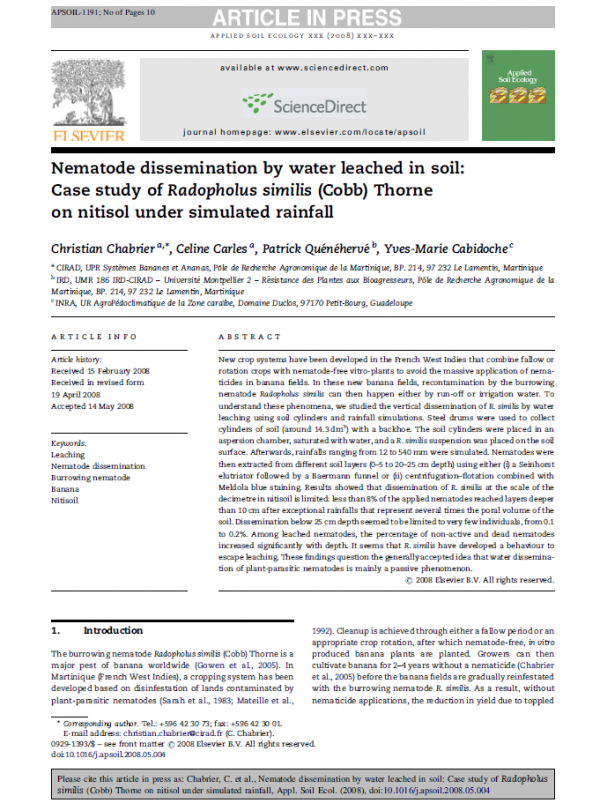
New crop systems have been developed in the French West Indies that combine fallow or rotation crops with nematode-free vitro-plants to avoid the massive application of nematicides in banana fields. In these new banana fields, recontamination by the burrowing nematode Radopholus similis can then happen either by run-off or irrigation water. To understand these phenomena, we studied the vertical dissemination of R. similis by water leaching using soil cylinders and rainfall simulations. Steel drums were used to collect cylinders of soil (around 14.3 dm3) with a backhoe. The soil cylinders were placed in an aspersion chamber, saturated with water, and a R. similis suspension was placed on the soil surface. Afterwards, rainfalls ranging from 12 to 540 mm were simulated. Nematodes were then extracted from different soil layers (0–5 to 20–25 cm depth) using either (i) a Seinhorst elutriator followed by a Baermann funnel or (ii) centrifugation–flotation combined with Meldola blue staining. Results showed that dissemination of R. similis at the scale of the decimetre in nitisoil is limited: less than 8% of the applied nematodes reached layers deeper than 10 cm after exceptional rainfalls that represent several times the poral volume of the soil. Dissemination below 25 cm depth seemed to be limited to very few individuals, from 0.1 to 0.2%. Among leached nematodes, the percentage of non-active and dead nematodes increased significantly with depth. It seems that R. similis have developed a behaviour to escape leaching. These findings question the generally accepted idea that water dissemination of plant-parasitic nematodes is mainly a passive phenomenon.